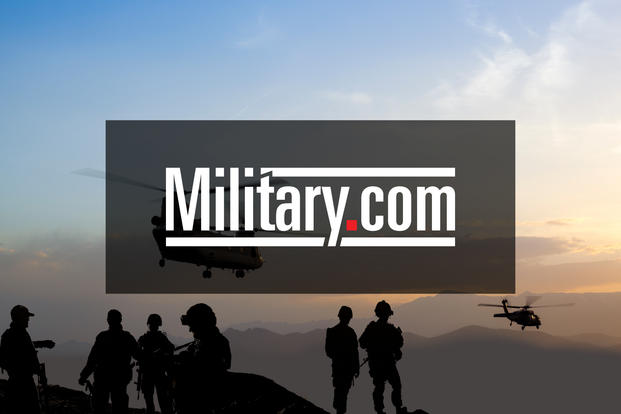More than 100 U.S. advisers and forward air controllers are moving forward with Iraqi and Kurdish forces, backed by U.S. airstrikes and rocket artillery fire, in the early stages of the campaign to drive the Islamic State from Mosul, a Pentagon spokesman said Tuesday.
The Iraqi Security Forces attacking from the south and Kurdish Peshmerga fighters pushing from the east are essentially moving along four lines of attack toward Iraq's second largest city, where more than a million residents have been under the control of the Islamic State of Iraq and Syria for more than two years.
The U.S. has employed the HIMARS rocket artillery system from the Qayyarah Airfield area, the offensive's logistics hub about 40 miles southeast of Mosul, to aid the advance of the Iraqi columns pushing north, said Navy Capt. Jeff Davis, a Pentagon spokesman.
"We have the HIMARS" south of Mosul, and "the HIMARS is active," Davis said at a Pentagon briefing.
AH-64 Apache helicopter gunships are also available for the Mosul offensive, but they have yet to be employed, Davis said. The U.S. is also using .155mm artillery from the general Qayyarah area to back the advance, he said.
The 101st Airborne Division had previously sling-lifted the .155s by helicopter to put them in a better firing position, but Davis declined to say whether that tactic was being employed to support the Mosul advance.
Embedded Troops
Slightly more than 100 U.S. advisers, mostly Special Forces troops, and Joint Terminal Attack Controllers to call in airstrikes are with the Iraqi and Kurdish forces, he said. Additional U.S. advisers are expected to go forward as the battle progresses.
Davis said that the U.S. troops are embedded with the Iraqis at the division level but are working with smaller Kurdish units. However, "they're always behind the forward line of troops" in their advisory roles.
He dismissed reports that the offensive had bogged down in the second day. "It's crazy to suggest on Day Two that there's a stall," he said.
To support the Iraqi and Kurdish forces, U.S. and coalition aircraft attacking near Mosul "engaged three ISIL tactical units and two staging areas; destroyed 10 mortar systems, five artillery systems, four ISIL-held buildings, four fighting positions, four vehicles, two supply caches, two repeater tower generators, a VBIED (Vehicle-Borne Improvised Explosive Device) facility, and a VBIED; and suppressed four tactical units and three rocket positions," U.S. Central Command reported, using another term for ISIS.
Near Qayyarah, two strikes engaged two Islamic State tactical units and a mortar position; destroyed an ISIS-held building, a mortar system, an oil tanker truck, and a rocket-propelled grenade; and damaged a vehicle, CentCom said.
Army Lt. Gen. Stephen Townsend, commander of Combined Joint Task Force-Operation Inherent Resolve, said in a statement Monday that the Mosul campaign could take weeks or months.
Davis said that the initial plan, approved by Iraqi Prime Minister Haider al-Abadi, was to limit the assault on Mosul itself to the Iraqi forces. The Kurdish Peshmerga forces are expected to give way eventually to the Iraqis as the assault moves closer to the city.
"There will be a little bit of a leap frog" as the Iraqi troops pass through the Kurdish lines, Davis said.
The Kurdish forces consist of about 10,000 fighters, Davis said, while the Iraqi Security Forces have about 18,000 troops.
Following the Iraqi advance are several thousand federal police who are expected to join tribal fighters in restoring order once the city is taken, Davis said. ISIS is believed to have 3,000-5,000 fighters to defend Mosul.
"Iraqis have the momentum," Army Maj. Gen. Gary Volesky, commander of the Combined Land Component Command-Operation Inherent Resolve, told NBC News. "They know it and they want to get there as quickly as they can" to end the myth of the so-called ISIS "caliphate."
It was in Mosul in June 2014 that ISIS leader Abu Bakr al-Baghdadi declared the creation of an ISIS caliphate in Iraq and Syria.
The Aftermath
The battle had hardly begun when the U.S.-led anti-ISIS coalition began planning for the aftermath.
On Monday, Joint Chiefs Chairman Gen. Joseph Dunford convened a meeting of more than 50 leaders from the anti-ISIS coalition at Joint Base Andrews on how to deal with "the second- and third-order effects" of ISIS' defeat in Iraq and Syria, The Hill newspaper reported.
Commanders of the U.S. military combatant commands attended the meeting.
At a Pentagon news conference Tuesday, Adm. Kurt Tidd, commander of U.S. Southern Command, said the meeting was an opportunity to remind the coalition that ISIS' ideology will persist after its battlefield defeat, and its terrorism threat will "continue to morph and metastasize."
The Pentagon also announced that Defense Secretary Ashton Carter will go on a week-long trip beginning Thursday to shore up allies against the ISIS threat.
Carter's first stop will be Turkey on Friday to discuss "a range of security challenges in the region, including the latest developments in Iraq and Syria," the Pentagon said.
Iraq has repeatedly called on Turkey to withdraw its troops and close its training facility for tribal fighters at Bashiqa, north of Mosul. Turkey has offered to join the drive against the city, but Iraq has rejected the offer.
Carter will also visit the United Arab Emirates and next week will be in Paris and Brussels for NATO ministerial meetings.
-- Richard Sisk can be reached at Richard.Sisk@Military.com.




























